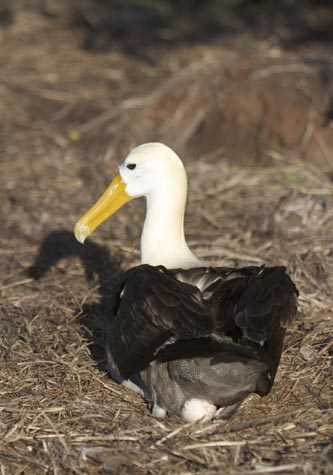This Island has so much to offer for our nature lovers, and that was the main reason we dedicated the whole day to explore this island. In the morning we visited a place known as Gardener Bay. At this location we offered a pre-breakfast activity, which consisted of kayaking along the coastline of the same location. This was a good beginning for our day, because our early adventurers spotted turtles, boobies, frigates, gulls, some nice geological formations, and on our way back to the ship, we had a small pod of dolphins that came to play with us.
To continue our morning program we went out again, this time for deep water snorkeling with sharks, rays, and lots of fish as well. Some other people just decided to go straight to one of the most beautiful white sandy beaches in Galapagos with a couple of hundred endemic Galapagos sea lions.
For the afternoon we went to one of the densest concentrations of endemic marine animals in Galapagos, known as Punta Suarez. We went out by Zodiac, and as soon as we disembarked we had a few welcoming committee groups to encounter, such as piles of marine iguanas and lots of Galapagos sea lions.
But our main goal was to cover the one and a half mile rocky trail to see the Galapagos’ largest endemic sea bird - the waved albatross.
This species comes back to the Galapagos to breed once every year. They spend a few months in the ocean before they travel back a few hundred miles to get to Espanola Island. This afternoon could not have been better, because we saw ten couples mating - that means in about two months we are going to have lots of baby albatross. This place is going to be amazing for a few months to come.
Along the cliffs we saw many species of soaring birds such as more waved albatross, Nazca boobies, blue-footed boobies, Galapagos hawks, sea gulls, shear waters, and albatross.
We had a perfect beginning to the day and a majestic sunset to finish it in this beautiful archipelago in the Pacific Ocean.







